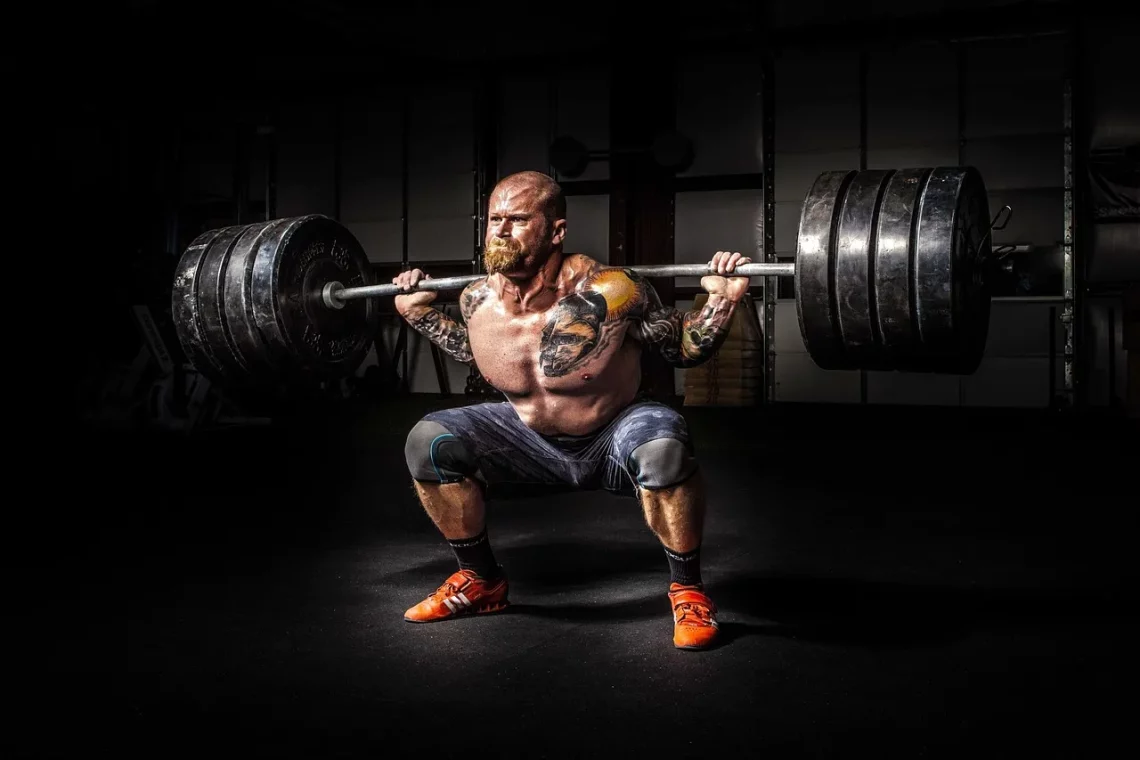
Unlocking the Secrets of the Iconic Greek Physique and Its Timeless Appeal
The Greek physique has long been a subject of fascination and admiration, embodying an ideal that transcends time and cultures. Rooted in ancient history, this aesthetic is not just about physical appearance; it represents a harmonious blend of strength, beauty, and discipline that has inspired countless generations. From the statues of Greek gods and athletes to modern interpretations of fitness, the allure of the Greek body is undeniable.
In a world where fitness trends come and go, the principles underlying the Greek physique remain steadfast. It is a testament to the power of balance, focusing on overall well-being rather than merely aesthetics. This approach emphasizes functional strength, flexibility, and endurance, making it as relevant today as it was in ancient Greece.
As we delve deeper into the secrets of this iconic physique, we will explore the foundational elements that contribute to its timeless appeal. By understanding these principles, individuals can not only enhance their physical form but also cultivate a mindset that celebrates health and vitality.
Understanding the Historical Context of the Greek Physique
To fully appreciate the Greek physique, one must first recognize its historical significance. Ancient Greece was a hub of philosophy, art, and athleticism, where the human body was celebrated as a work of art. The Greeks believed that physical perfection was closely tied to moral and intellectual excellence. This cultural belief laid the groundwork for the idealization of the human form, as seen in their sculptures and literature.
Athletics played a central role in Greek society, exemplified by events such as the Olympic Games. These competitions were not solely about winning; they were a celebration of human potential and achievement. Athletes trained rigorously to achieve their ideal body, embodying strength, speed, and agility. The concept of “arete,” or excellence, was at the heart of these pursuits, encouraging individuals to strive for their best physical selves.
Moreover, the Greeks understood the importance of balance in developing the perfect physique. They combined physical training with mental discipline, believing that a healthy mind is essential for a healthy body. This holistic approach is reflected in their training regimens, which often included a variety of activities such as running, wrestling, and gymnastics.
In addition, Greek philosophers like Socrates and Plato discussed the significance of a well-rounded education that included physical training. This integration of body and mind continues to resonate today, influencing modern fitness philosophies that prioritize overall health rather than isolated physical attributes.
Understanding this historical context provides invaluable insight into the enduring appeal of the Greek physique. It is not merely about aesthetics; it represents a cultural legacy that celebrates the potential of the human body and spirit.
The Principles of Strength and Conditioning
At the core of achieving a Greek-like physique lies the emphasis on strength and conditioning. The ancient Greeks understood that a well-developed body must be both powerful and functional. Their training methods focused on building strength through compound movements, which remain integral to modern fitness programs today.
Exercises such as squats, deadlifts, and bench presses are fundamental for developing muscle mass and overall strength. These compound movements engage multiple muscle groups simultaneously, promoting efficient training and functional strength. The Greeks would have likely employed similar techniques, utilizing bodyweight exercises and natural movements to develop their physiques.
In addition to strength training, conditioning played a vital role in their fitness regimes. Cardiovascular health was essential for athletes competing in various events, and activities such as running, swimming, and wrestling were prevalent. These exercises not only enhanced endurance but also improved overall physical performance, allowing athletes to excel in their respective sports.
Moreover, the Greeks understood the importance of recovery and rest in the training process. Overtraining can lead to injuries and setbacks, so incorporating rest days and active recovery into a fitness routine is crucial. This principle remains relevant today, highlighting the need for a balanced approach to training that includes periods of rest and rejuvenation.
Nutrition also played a significant role in their training. A diet rich in whole foods, lean proteins, fruits, and vegetables fueled their bodies for optimal performance. The Greeks recognized that what they consumed directly affected their physical capabilities, further emphasizing the connection between diet and fitness.
By adopting these principles of strength and conditioning, anyone can work towards achieving a physique reminiscent of the ancient Greeks. It requires dedication, discipline, and a commitment to lifelong health, but the rewards are well worth the effort.
The Role of Flexibility and Mobility
One often overlooked aspect of the Greek physique is the importance of flexibility and mobility. The ancient Greeks placed a significant emphasis on these components, understanding that a strong body must also be agile and adaptable. Flexibility enables individuals to perform a wider range of movements, reducing the risk of injury and enhancing overall athletic performance.
Many traditional Greek exercises incorporated elements of stretching and mobility work. Activities such as gymnastics were not only about strength but also about fluidity of movement. This holistic approach is essential for developing a well-rounded physique that can excel in various physical endeavors.
Incorporating flexibility training into a fitness routine can yield numerous benefits. Stretching improves circulation, increases joint range of motion, and aids in muscle recovery. Additionally, it can enhance athletic performance by allowing individuals to execute movements more efficiently and with greater ease.
Yoga and Pilates are modern practices that emphasize flexibility and mobility, making them excellent complements to a strength training routine. These disciplines focus on controlled movements, breath awareness, and body alignment, promoting both physical and mental well-being. Integrating these practices into a fitness regimen can help individuals cultivate the flexibility reminiscent of ancient Greek athletes.
Moreover, the ancient Greeks recognized the importance of balance in their physical pursuits. Just as strength and conditioning are crucial, so too is the ability to move freely and gracefully. This balance between strength and flexibility is key to achieving the ideal Greek physique, allowing individuals to move with confidence and poise.
Ultimately, prioritizing flexibility and mobility is essential for anyone aspiring to attain a Greek-like physique. By embracing these components of fitness, individuals can enhance their overall athleticism and well-being, paving the way for a more balanced and fulfilling approach to health.
Mindset: The Foundation of the Greek Ideal
While physical training and nutrition are critical components in achieving the Greek physique, the mindset plays an equally important role. The ancient Greeks understood that cultivating a strong mental attitude was essential for success in both athletics and life. This emphasis on mindset is a cornerstone of the Greek ideal, influencing how individuals approach their fitness journeys today.
A growth mindset, characterized by resilience and a willingness to learn from challenges, is vital for anyone pursuing fitness goals. The Greeks believed in the power of persistence and determination, often training under difficult conditions to achieve excellence. This mentality fosters a sense of purpose and commitment, empowering individuals to push through obstacles and setbacks.
Visualization techniques can also enhance mental focus and motivation. The Greeks likely employed similar practices, envisioning their success in competitions and striving to embody their ideals. By picturing their goals and the steps necessary to achieve them, individuals can create a clear roadmap for their fitness journeys.
Additionally, mindfulness practices can promote a deeper connection to one’s body and mind. Being present during workouts and paying attention to physical sensations can enhance performance and reduce the risk of injury. This awareness allows individuals to tune into their bodies, recognizing when to push harder or when to rest.
Ultimately, adopting a mindset that aligns with the principles of the Greek physique is essential for long-term success. It encourages individuals to view fitness as a holistic journey rather than a destination, fostering a love for movement and a commitment to overall well-being.
In conclusion, unlocking the secrets of the iconic Greek physique involves understanding its historical context, embracing principles of strength and conditioning, prioritizing flexibility and mobility, and cultivating a resilient mindset. By integrating these elements into one’s fitness journey, individuals can work towards achieving a timeless ideal that celebrates the potential of the human body and spirit.
**Disclaimer: This article is for informational purposes only and does not constitute medical advice. For any health-related concerns, please consult a qualified healthcare professional.**




